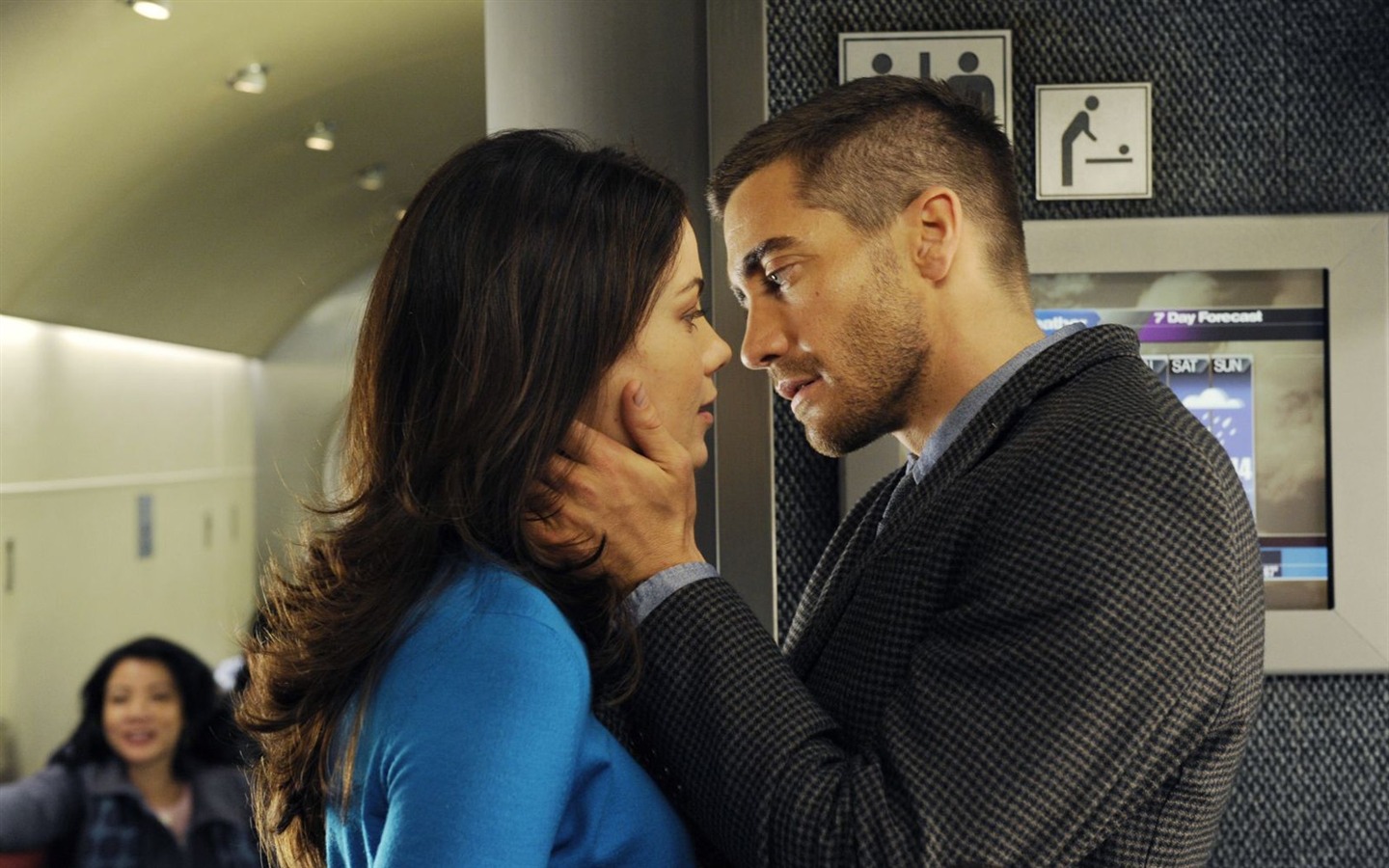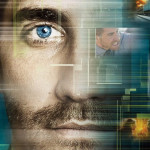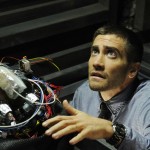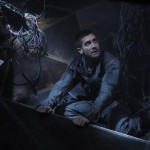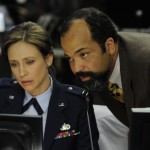You know how the marketeers of the movie world like to compare Film A to Films B, C and D to give you a basis on which to measure them? All part of the greater plan to categorise and pigeon hole everything, and drop any truly original movie until it becomes a cult classic long after being made? Such is the cynicism of the studio system.
But in the case of Source Code such comparisons are easy peasy – you make them yourself without thinking too hard. Let Wikipedia tell the story:
Critics have compared Source Code with both the 1993 film Groundhog Day, and British film director Tony Scott‘s 2006 time-altering science fiction film Déjà Vu: in the latter case, the similarity of plotline in the protagonist’s determination to change the past was highlighted, and his emotional commitment to save the victim, rather than simply try to discover the identity of the perpetrator of the crime. Alternatively, it has been described as a “cross between Groundhog Day and Murder on the Orient Express,” while The Arizona Republic film critic Bill Goodykoontz says that comparing Source Code to Groundhog Day is doing a disservice to Source Code ’s enthralling “mind game.”
The Groundhog Day comparison is obvious, since the same 8 minutes are repeated multiple times. But enthralling mind game? Granted Source Code has an existential time-twisting bent somewhere near the end, at which point most action movie enthusiasts dropped off in their multiplex seats, but for the first 45 minutes, while Jake Gyllenhaal‘s Capt. Colter Stevens works out how he came to have passed out on a helicopter sortie in Afghanistan and woken on a Chicago-bound train (which is about to explode thanks to a terrorist bomb) in the guise of one Sean Fentress, then subsequently to discover the bomb and the identify of the bomber, such adrenalin junkies will be on the edge of their metaphorical seats.
His principle protagonists during this discovery phase are the excellent Vera Farming as primary interface to the security programme Capt. Colleen Goodwin, during which time Stevens is trapped in what appears to be a defunct Also Michelle Monaghan as bemused acquaintance Christina Warren on the train 8 minutes before the bombing. This develops into an unrealised proto-love story with a remarkable 3D still shot of the characters kissing in the train before the explosion envelops the carriage. Would that that could have lived longer too.
But beyond that pulsating start you have to bear with the story line, since SC owes at least as much to cheesy science fiction as a thriller that, like the curate’s egg, is good in parts but allows the momentum to drop and never quite recovers. Maybe richness and complexity could have been added by exploring the motives of the bomber – that was another trick Ripley missed along the way.
The weakest elements relate to explaining the phenomenon of “scource code” in the hands of the usually reliable Jeffrey Wright, who on this occasion turns in a stinker of a performance. This I put down to the fact that Wright does not believe in his character any more than we do, so weakly is the part written by Ben Ripley. The film slightly runs out of steam before the end, and the premise that the barely alive Stevens can use his alter ego to shift time as well as save Chicago doesn’t hold water. But the main idea was Ripley’s too, so I won’t be too hard on him:
Ripley first came up with the idea for Source Code, in which government operative Colter Stevens repeatedly relives the eight minutes leading up to a terrorist train bombing in hopes of finding the bomber, he had no intention of writing it on spec. Having established himself in Hollywood largely doing “studio rewrites on horror movies,” he felt a solid pitch would do the trick. Unfortunately, it didn’t. “I sat down with a few producers, and the first couple just looked at me like I was nuts,” confesses Ripley. “Ultimately, I had to put it on the page to make my case.”
The Afghanistan and terrorist angle sold it to the Studios, but in the final analysis this is a brave try with too many flaws to be regarded as an outright success. When it works, it works well – and the SFX team have done a splendid job in creating a credible, though obviously faked, explosion. And for marshalling the troops to good effect, well done to young director Duncan Jones. I just wish the pace had been kept up to the end.

